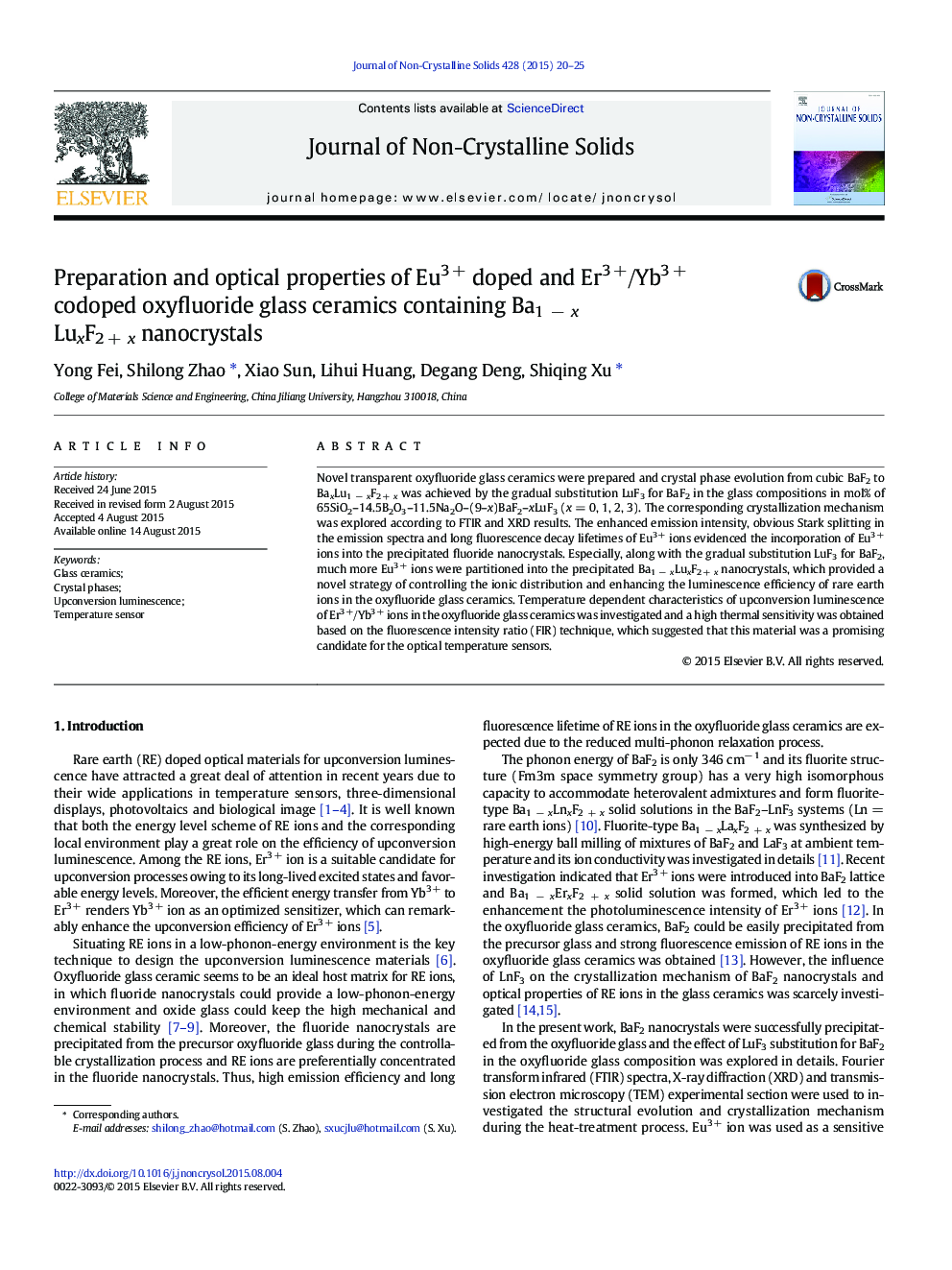| کد مقاله | کد نشریه | سال انتشار | مقاله انگلیسی | نسخه تمام متن |
|---|---|---|---|---|
| 1480557 | 1510416 | 2015 | 6 صفحه PDF | دانلود رایگان |

• Transparent oxyfluoride glass ceramics containing BaxLu1 − xF2 + x nanocrystals were fabricated.
• Phase transition from BaF2 to BaxLu1 − xF2 + x was realized by the gradual substitution of LuF3 for BaF2.
• The distribution of Eu3 + ions in the glass ceramics changed greatly due to the phase transition.
Novel transparent oxyfluoride glass ceramics were prepared and crystal phase evolution from cubic BaF2 to BaxLu1 − xF2 + x was achieved by the gradual substitution LuF3 for BaF2 in the glass compositions in mol% of 65SiO2–14.5B2O3–11.5Na2O–(9–x)BaF2–xLuF3 (x = 0, 1, 2, 3). The corresponding crystallization mechanism was explored according to FTIR and XRD results. The enhanced emission intensity, obvious Stark splitting in the emission spectra and long fluorescence decay lifetimes of Eu3 + ions evidenced the incorporation of Eu3 + ions into the precipitated fluoride nanocrystals. Especially, along with the gradual substitution LuF3 for BaF2, much more Eu3 + ions were partitioned into the precipitated Ba1 − xLuxF2 + x nanocrystals, which provided a novel strategy of controlling the ionic distribution and enhancing the luminescence efficiency of rare earth ions in the oxyfluoride glass ceramics. Temperature dependent characteristics of upconversion luminescence of Er3 +/Yb3 + ions in the oxyfluoride glass ceramics was investigated and a high thermal sensitivity was obtained based on the fluorescence intensity ratio (FIR) technique, which suggested that this material was a promising candidate for the optical temperature sensors.
Journal: Journal of Non-Crystalline Solids - Volume 428, 15 November 2015, Pages 20–25